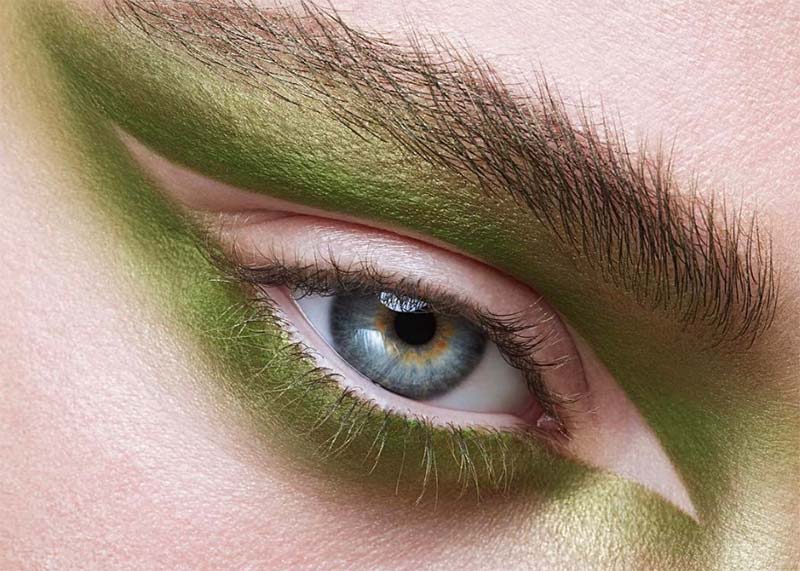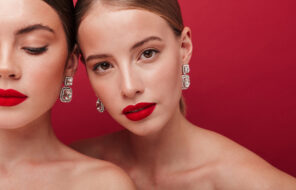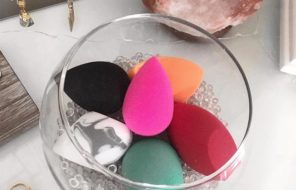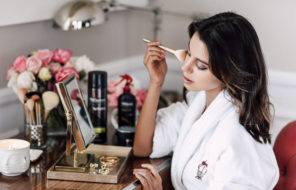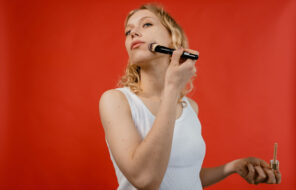If you’re new to the realm of eyeshadow, then it can seem quite overwhelming to decide which is the best eyeshadow palette for you. Where does one even begin to decide which shade to get, let alone which eye palette?
Here’s a quick eyeshadow 101 to arm you with a palette full of information so you can make the right choice for you. Ultimately, you can make use of any eyeshadow palette, but if you’re looking for the most complementary combinations, then take these three things into consideration – your eye color, skin tone, and hair color.
Dive deep into the types of eyeshadow palettes on the market to learn how to choose the right one for you, based on skin tone, eye color, and hair color.
In this article:
- Eyeshadow Palette Formulas
- Basic Eyeshadow Palette Textures
- Best Eyeshadow Palette for Your Eye Color
- Best Eyeshadow Palette for Your Skin Tone
- Best Eyeshadow Palette for Your Hair Color
- How to Pair the Eyeshadows in Your Eye Palette
Eyeshadow Palette Formulas
The first thing to note about eyeshadows is that, like any makeup product, they come in different formulas and textures, each offering a different end result. Not all eyeshadow palettes are created equal. In fact, there are several formulas you need to know, which are:
Pressed Powder Eyeshadow Palettes
Powder eyeshadows are the most common formula type on the market and in people’s makeup bags. In addition, they hold the widest variety of shades in an eyeshadow palette. Powder eyeshadows encompass loose, pressed, and baked types, with the pressed option being the most common in an eye palette.
Pressed powder eyeshadow palettes are a great starting point for beginners because of their ubiquity and ease of application. Powders hold a long shelf life as well but aren’t as long-wear on the eyelids. Their powder quality makes the shadows prone to fall out and creasing, so you might need to apply an eye primer first.
Baked Powder Eyeshadow Palettes
An alternative of the powder eyeshadow, the baked option is cream-based but baked to dry it down, which makes it appear with a marbled effect. Baked powder shadows are smooth and velvety, applying both wet and dry for day to night looks. They are universally flattering and effortless.
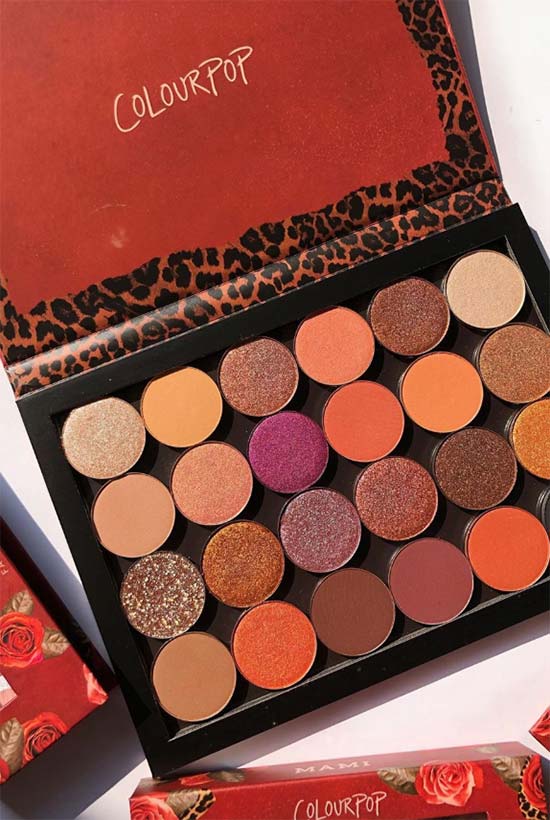
Cream Eyeshadow Palettes
At times referred to as “jelly” formulas, cream eyeshadow formulas often come in pots and hold a soft texture for easy blending! Cream eyeshadow palettes also feature different finishes, like matte and metallic, which makes them an excellent alternative to powders, especially since they hold more pigment to them. And there’s no need for makeup brushes here, as fingers do just fine! The only downside is that the formula’s softer texture makes it prone to creasing.
Pigmented Eyeshadow Palettes
Highly pigmented eyeshadow palettes are popular among professional makeup artists and on sets, as they’re great for creating dramatic looks. The color payoff is just as pictured, and the shadows blend and build easily, lasting much longer than regular ones. It is difficult to master though, as applying pigmented eyeshadows requires a number of professional tools and great skills.
Basic Eyeshadow Palette Textures
Aside from the formula, an eyeshadow palette might hold shadows in different textures, which define the appearance of the final look. In fact, in one eyeshadow palette, you might find different textures for mixing and matching and creating exciting looks for different occasions. The most common eyeshadow textures (or finishes) featured in an eye palette are:
Frost Eyeshadows
Perfect for younger skin, frost eyeshadows hold a shiny and vibrant finish, with an opaquer coverage, usually coming in fun, bright pastel shades. They act as great highlight shades used in the inner corner of the eye and the center of the lid. However, frosted eyeshadows aren’t recommended for mature skin, as they tend to sink into wrinkles making them more visible.
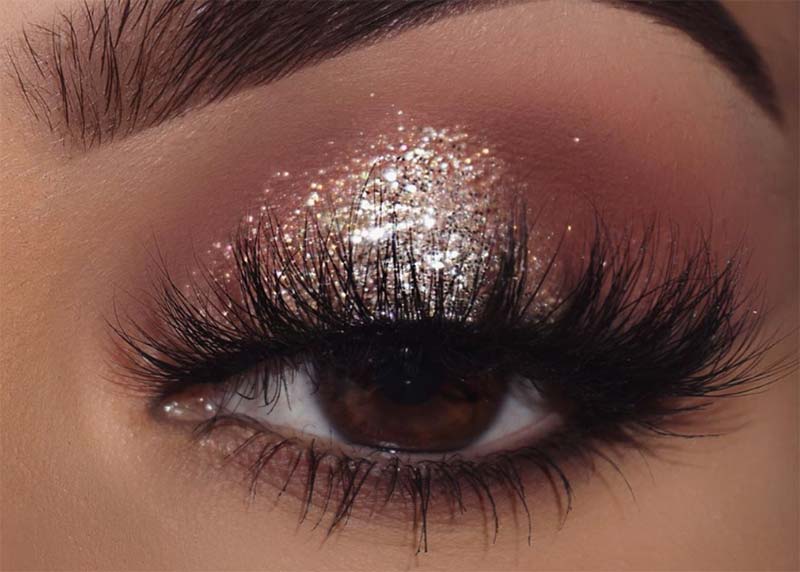
Metallic Eyeshadows
Quite similar to the frost textures, metallic eyeshadows hold a reflective quality for a more foiled effect, which is acquired thanks to the use of an underlying gold or silver shimmer used in them. Unlike frosted eyeshadows, they aren’t as opaque and are perfect for creating more dramatic, futuristic looks.
Matte Eyeshadows
Usually featuring the highest color payoff, matte eyeshadows are perfect for creating natural looks. They aren’t shiny or shimmery and are usually longer-lasting without creasing. Matte shadows can be both dry and creamy, acting as great base colors for your eye makeup looks. Another bonus is the versatility of such shadows, as you can use matte colors also as a liner.
Shimmer Eyeshadows
As the name already suggests, shimmer shadows in an eyeshadow palette bear a subtle sheen and sparkle to them with great sheer coverage. The lighter shades of shimmer shadows can act as highlight colors, while the darker ones are great for adding oomph to party looks. Typically, shimmer shadows don’t collect in wrinkles and fine lines, thus being universally flattering options.
Glitter Eyeshadows
With more visible specks and flecks of finely milled glitter, glitter shadows in an eyeshadow palette are the most glamorous, perfect for creating party looks. They are, however, also the most difficult to work with since you’ll need an agent to adhere the glitter to the lids and avoid any fallout. Be warned that glitter shadows tend to crease and sink into fine lines.
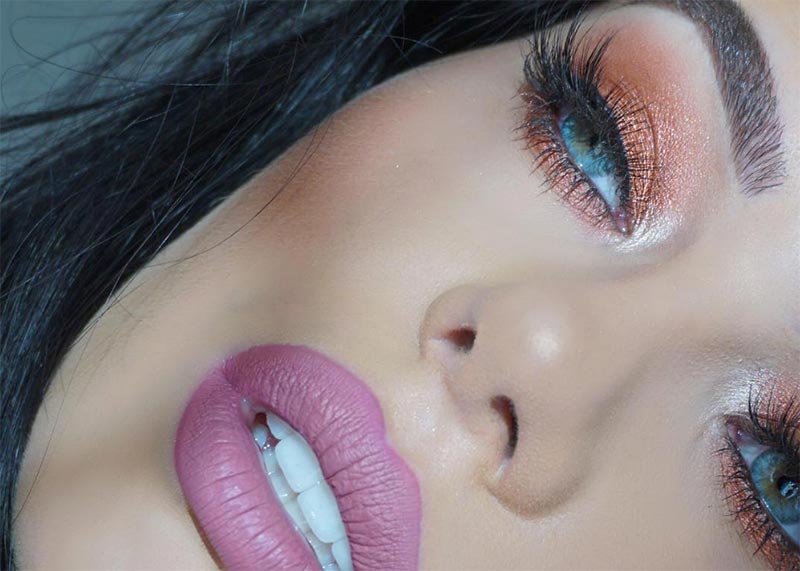
Satin Eyeshadows
Satin eyeshadows are the perfect options falling between those chalky mattes and sparkly shimmers. They have a semi-matte, semi-shimmer finish – shiner than mattes, but not as sparkly as shimmers. Satin shadows work for every skin type and age, working as both base and accent shades.
Best Eyeshadow Palette for Your Eye Color
Taking eye color into account is especially important when you’re picking the best eyeshadow palette. That’s not to say that you can’t wear your favorite shade just because of your eye color, but it is worth acknowledging that specific colors do pair better with certain eye colors than others.
- Blue Eyes: Go with lighter shades, as darker ones will distract from your eyes instead of enhancing them. Neutral and earth hues, such as browns, grays, golds, taupe and sand shades, are also good options since they balance well. And adding in some black eyeliner will make those blue eyes pop even more! For party looks, consider brightening up the look with rust, purple, peach, or pink tones.
- Green Eyes: Think rich and bright eyeshadow palettes with green eyes. However, for exceptionally bright eyes, a muted hue might help balance the overall look, like a muted purple, pale pink, a soft mauve, or light brown. Warm metallics, like gold, rust, or copper, will make your green eyes sparkle for special nights out.
- Gray Eyes: With gray eyes, it’s best to experiment with muted, silvery blues, grays, and greens to bring out the color even more. Smokier shades further play up the gray, making it pop even more.
- Hazel Eyes: Metallics is the word on the block for hazel eyes, which, in a sense, are similar to gray eyes in that the intensity can change depending on the shade used around the lid. Bronze and gold are good choices here, just like rose gold and neutral beige tones. Deeper shades of violet, burgundy, or mocha will enhance your beautiful eye color even more.
- Brown Eyes: Brown-eyed beauties are lucky, as nearly all eyeshadow shades tend to complement the warmth of their eye color. Jewel tones, especially, work magic, including purples, greens, blues, golds, rust, and coppery shades.
Best Eyeshadow Palette for Your Skin Tone
Skin tones and undertones are also important factors to consider when shopping for the best eyeshadow palette for you.
First things first, you should determine your skin undertone. The simplest method is to look at your wrist veins in natural lighting. You have a cool skin tone if your veins are blue or purple, and a warm undertone if they appear green. If you can’t determine your skin tone, chances are you have a neutral undertone.
Another easy way of determining your skin undertone is checking if you look your best in gold or silver. Those with cool skin tones look best in silver, while gold flatters warm undertones more. Those with neutral undertones look equally chic in silver and gold. Also note that if you burn easily, it’s likely you’re cool-toned, and if you tan easily, you’re warm-toned.
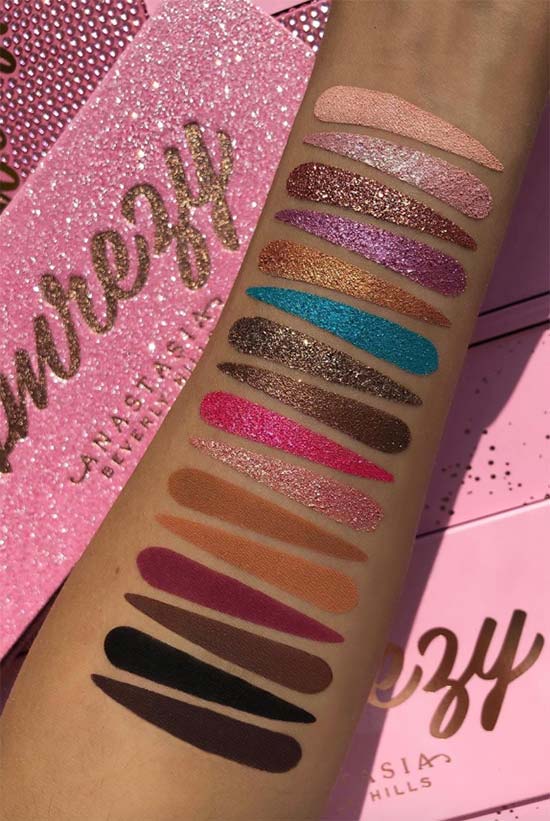
- Warm Undertone: Warm eyeshadow palette tones for warm undertones! Think neutral colors, as well as yellow, bronze, golden, coral, and light pastels, including pale pink and green.
- Cool Undertone: Cool blues and pinks pair well with cool undertones, as do colors like silver, teal, lilac, and gray, because they blend well with the coolness of your skin tone.
- Neutral Undertone: This is the best of both worlds since the entire palette is available to those with neutral undertones. Experiment to your heart’s desire, and if you’re looking to go natural, try taupe or cream.
- Fair Skin Tone: Earthy hues or metallic ones like bronze and copper work nicely against lighter skin tones. Depending on whether you have a pink or warm undertone, you should experiment with soft shades or earthy reds. Overall, stay away from grays that might wash out your skin tone. Instead, if you are cool-toned, think soft pinks, purples, and sea shades, and if you are warm-toned, consider rich rust and violet shades.
- Medium Skin Tone: Red, honey, cinnamon, and brown are tones that blend really well with medium skin tones. You can experiment with cooler shades, like gray and lavender, if you have a cool undertone, especially if you’re going for a winter look. Highly pigmented blues will flatter medium skin toned with warm undertones.
- Dark Skin Tone: Darker and ashier shades like black tend to make dark skin tones dull, so make sure to avoid them overall. Leaning towards vibrant and jewel hues like purple, emerald, ruby, or warm shades like burgundy or metallic gold is a fantastic idea!
Best Eyeshadow Palette for Your Hair Color
This might sound unnecessary, but taking your hair color into account when choosing the best eyeshadow palette can make a difference in your final look, especially if you consider complementary hues.
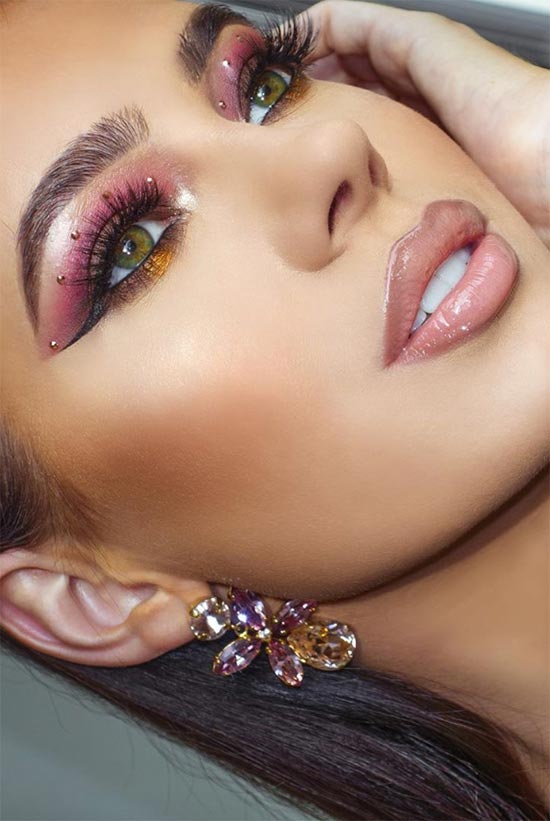
- While keeping eye color and skin tone in mind, those with blonde hair should play around with subtle, natural eyeshadow tones, including bronze, stone, beige, pastel blue, light pink, and plum. Layer in some intensity for a night look.
- If you’re a redhead with pale skin, dabble in the peach, brown, and copper family, but keep it light on the area near your eyebrow. Since red, copper or auburn hair is already rich, go for semi-muted shades, such as olive or pink, while shiny options are to be avoided in order not to take the focus away from the hair color.
- Brunettes, similar to those with brown eyes, can have fun with a wide range of eyeshadow palettes, but browns, taupes, and pinks look especially exciting, as do plums, greens, and burgundies. Dark hair, like dark skin, pairs well with jewel tones and vibrant colors, including pinks, purples, bright greens, and even gold. Those with a darker hair color and a light skin tone should consider pastel shades or neutral colors to avoid a washed-out look.
- Pastels work nicely with gray hair, and if you’ve dyed your hair a bright unnatural fashion color, experiment with shades opposite on the color wheel to really make those strands pop. For instance, if you have green hair, go for purple and pink shadows, or if you have pink hair, try green shadows.
How to Pair the Eyeshadows in Your Eye Palette Like a Pro
Too much or too little? When confronted with a set of choices, it’s only human nature to battle with indecisiveness and add 10+ pans of shades into the mix, and we could be sitting here all night.
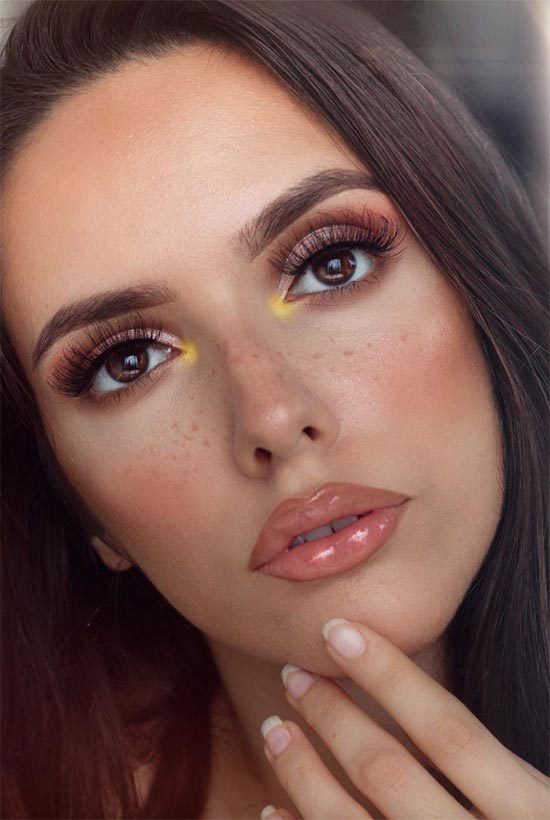
Overwhelming, at first, but thankfully the path to eyeshadow-ing has been paved many a time by millions before.
Your eye palette, according to celebrity makeup artist Nick Barose, is easier to use when you stop viewing each shade individually and instead start grouping them into categories.
The lighter colors are highlighters, your accent shadows are the rich and pigmented shades, the neutrals are your transition and crease hues, and the darkest ones are your line and contour eyeshadows.
- Highlighter colors can be applied in three spots: just under the eyebrow to enhance the arches, around the inner corners of the eye to make them look more awake, or on the center of the eyelid in the end to liven up your look further.
- Accent colors, on the other hand, take up the majority of your eyelid, from lash line to crease.
- Your transition or crease shade is blended into the crease line to soften the edges of your look but also as an overlap for a smokey eye or cat eye.
- The line and contour hues are used to define the top and bottom lash lines. An angled brush is often needed.
- For application, start with a primer to assist in your eyeshadow’s long-wear capabilities. Then, sweep in a neutral shade over the lids and up to the crease before blending in a darker hue to your crease. Then, add in some highlighter around in any of the three spots.
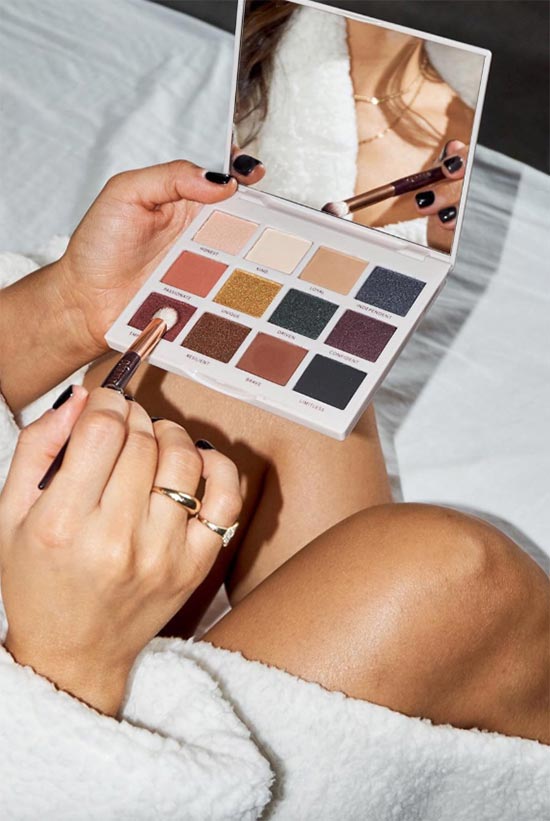
Before starting mixing and matching the colors in your eye palette, there are two important things to keep in mind. The first is to pick a look; this might seem pointless to say, but visualizing the end result is a good way to start off. Decide if you’re going for a muted look, something shiny, dramatic, colorful, or natural.
The second is that when you’re looking to pair shadows from your eyeshadow palette, you have to follow three basic rules:
- Use a neutral color
- Mix textures
- Use a light, a medium, and a dark color
Following these basics guarantees an involved and professional result.
Photos via @nikki_makeup, Instagram

